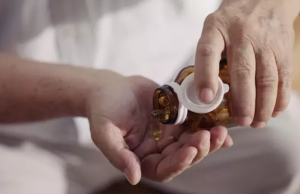Aluminum foil has many uses in the kitchen and beyond. You can use it to wrap up leftovers, cover a bowl that needs to be stashed in the fridge for a bit, line a baking sheet, clean a pan, and more. Of course, you already know this. That’s the reason why you, most likely, have a box or three in a kitchen drawer right now. While foil is a great thing to keep around, there are a few things you shouldn’t do with it.
Some sources will warn against cooking food in foil. We do it sometimes, though. And so this story is about things you should definitely never do. Here are 5 things to skip when it comes to your roll of aluminum foil.

1. Don’t put aluminum foil in the microwave.
This one may go without saying, but a little reminder never hurts: According to the FDA, you should never put aluminum foil in the microwave because microwaves reflect off the aluminum, causing food to cook unevenly and possibly damage the oven (including sparks, flames, or even fires).
2. Don’t bake cookies on it.
While you can use foil to line a baking sheet for, say, crisping up bacon in the oven, it’s not the best liner for your sheet pan if you’re making cookies. Lining your cookie sheet with aluminum foil can cause the bottom of your cookies to cook faster, ultimately resulting in uneven bake. Instead, use parchment paper, a silicone baking mat, or a really good nonstick spray.
3. Don’t use aluminum foil to line the bottom of your oven.
Lining the bottom of your oven with aluminum foil might sound like a good way to catch spills and avoid major oven cleanups, but the folks at Reynolds don’t recommend it: “To avoid possible heat damage to your oven, we do not recommend using aluminum foil to line the bottom of your oven.” Instead, place a sheet of aluminum foil on an oven rack below whatever you’re baking to catch drips (make sure the sheet is only a few inches larger than your baking dish to allow for proper heat circulation).
4. Don’t use aluminum foil to store leftovers.
Leftovers will keep in the fridge for three to four days, but aluminum foil isn’t ideal for storing them. Foil is not airtight, meaning no matter how tightly you wrap it, some air will get in. This allows bacteria to grow faster. Instead, store leftovers in airtight storage containers or food storage bags.
5. Don’t use it for acidic foods.
Acidic foods (like tomatoes, tomato sauce, and tart fruits) can interact with the aluminum and, after a few days, erode the foil. For these foods, you’re better off using plastic wrap or or even glass containers. Also: If you’re wrapping food up with foil, it’s best for a temporary solution, as a foil-wrapped burrito is not airtight.
Moreover, you shouldn’t toss aluminum foil after one use. Turns out, Grandma was right. Foil can certainly be reused. If it’s not too crumpled or soiled, you can wash aluminum foil by hand or in the top rack of the dishwasher to get a few extra miles out of each sheet. When you decide it’s time to retire a sheet of aluminum foil, it can be recycled.
References: thekitchn.com, allrecipes.com















